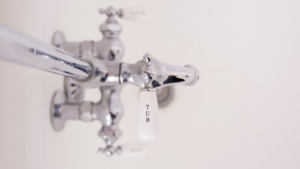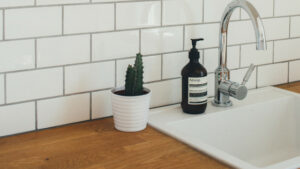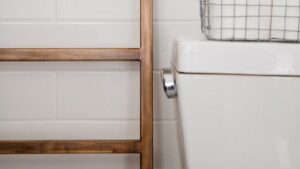What Do I Do With an Old Bathtub?
So you’ve just recently noticed that your tub’s old and worn, and you also suspect that it has already begun to leak. With no bathroom renovation budgeted for in, say, the next five years, getting your tub replaced doesn’t seem like a great idea.
After all, the mess replacing your tub will lead to, and the huge expense and the time it would take for the newly installed tub to be reusable, aren’t things you can deal with right now. All you want is an efficient and reasonable option to get your tub working again within the shortest time possible.
So if you ask yourself, What do I do with an old bathtub, when buying an entirely new one is out of the question? The answer is to either get it refinished or relined.
Tub Refinishing
Otherwise known as “reglazing,” tub refinishing is a labor-intensive process (about four to six hours of site work by a single technician) which involves the use of hazardous chemicals and the following basic steps:
- Masking the tub surface to protect it from the overspray
- Venting the bathroom area to get rid of the toxic fumes
- Caulk removal
- Swathing the tub in hydrofluoric acid to ensure surface adherence
- Washing away the hydrofluoric acid
- New caulk installation
- Air drying the tub with a fan
- Spray on coating fast-drying epoxy (two coats)
- Cleaning with a tack cloth to get rid of dust particles and other foreign objects
- Spray applications of a polyurethane finish coat (x4) with sanding done in between applications
- Polishing
- Curing time of 24 hours (minimum) before the tub can be used with water
Tub Relining
Unlike reglazing work which involves most of the action taking place right in your own home, tub reliners are made offsite after a local installer like Tureks Plumbing has taken exact measurements of your tub and sends them, along with some clear photos, to the tub liner manufacturer he works for.
So, what happens next?
- Identification of the make/model by the tub liner manufacturer.
- Using an in-house model of the same, a vacuum-formed mold of the tub is made using a sheet of 1/4 inch ABS acrylic (it’s used for football helmets and airplane windshields, too!). The resulting mold is a 35-pound liner that fits seamlessly on your old tub. Take note that this process takes about four to eight weeks!
- Prior to installation, the installer uses denatured alcohol to thoroughly clean the old tub and removes both the drain and overflow. The liner is then trimmed to ensure it fits snugly, especially if your tub is in a corner or is set against the wall.
- The tub liner is then securely attached to the old tub using a two-sided butyl tape and silicone adhesive combo.
- A matching new drain and overflow are also installed.
- To finish off, the installer applies caulking at the seams.
The entire installation process can take six to eight hours for one technician to finish. Then you can use your “new” tub right away.
Weighing Your Options
Both refinishing and relining are cost-effective options if you do not have the budget yet to get a new tub, nor do you have the inclination to have your bathroom use interrupted by a mini home renovation project. They can also add years of use to your tired, old tub – depending on what is stated on the warranty.
However, if you have a fiberglass tub, a jetted one or a claw-foot tub, you may need to look elsewhere. Both reglazing and relining companies tend to not take on jobs for such tub types.
So, have you decided yet? Be sure to call Tureks Plumbing Services for more professional advice regarding your tub fixing options.


 Do I Need a Whole House Filter?
Do I Need a Whole House Filter?




